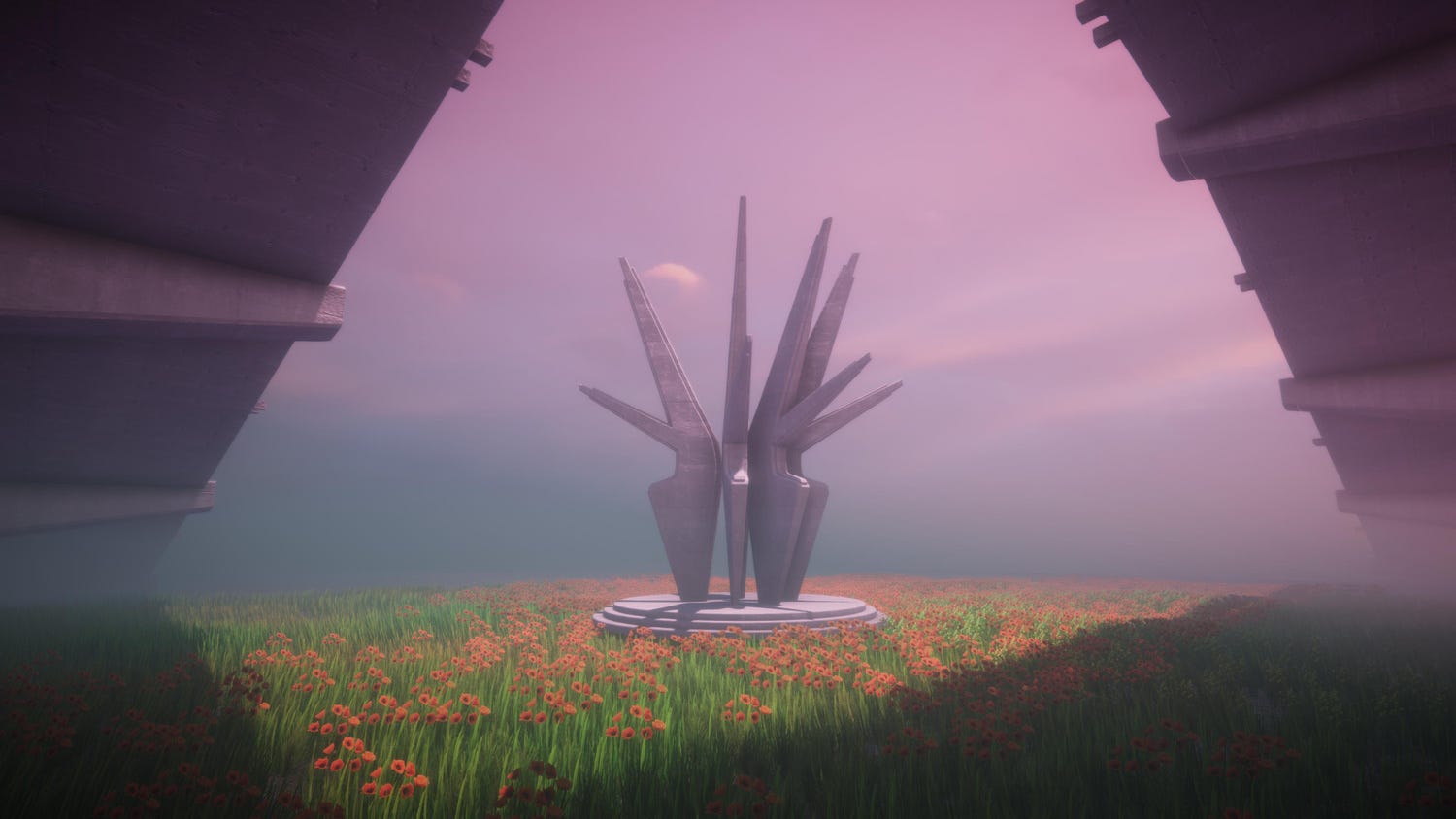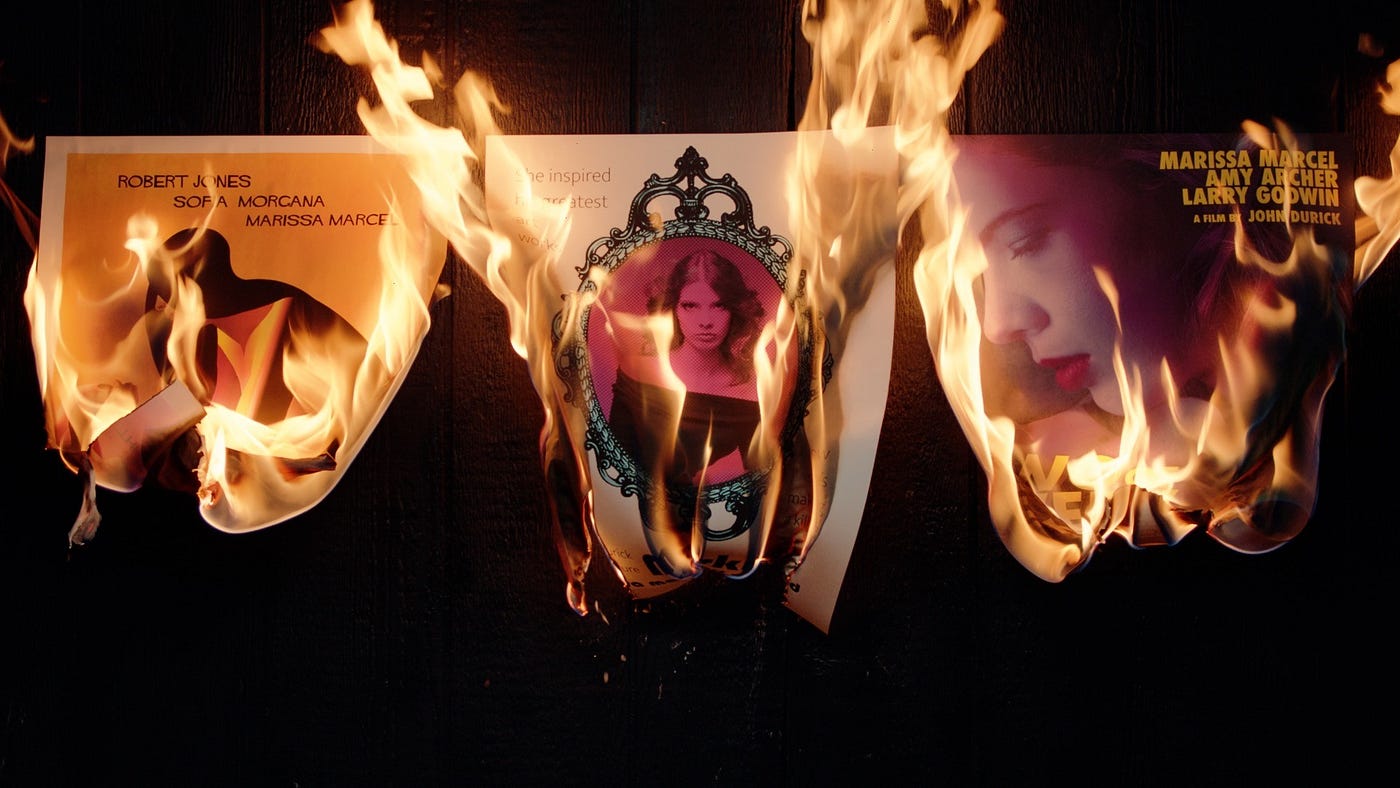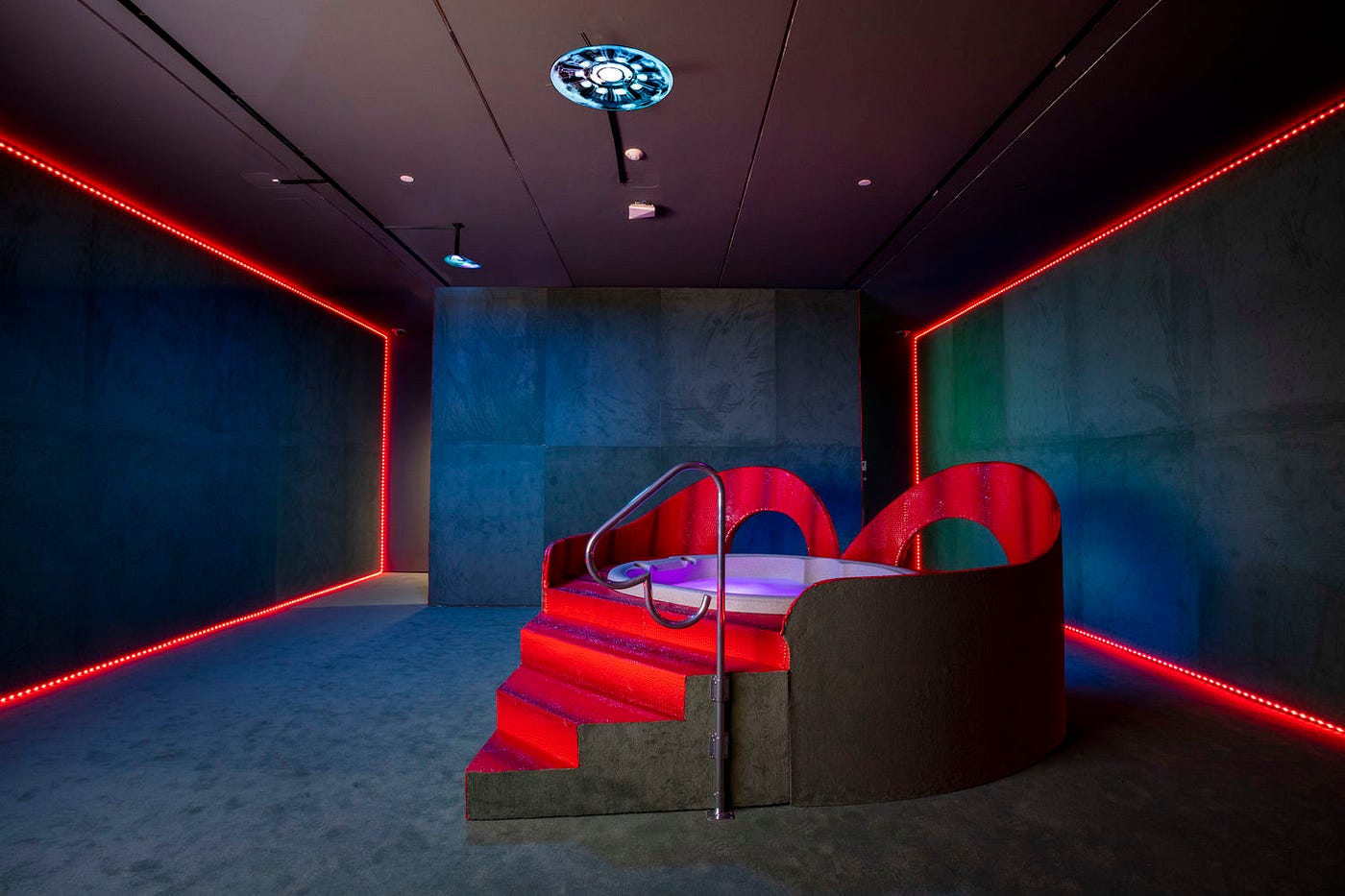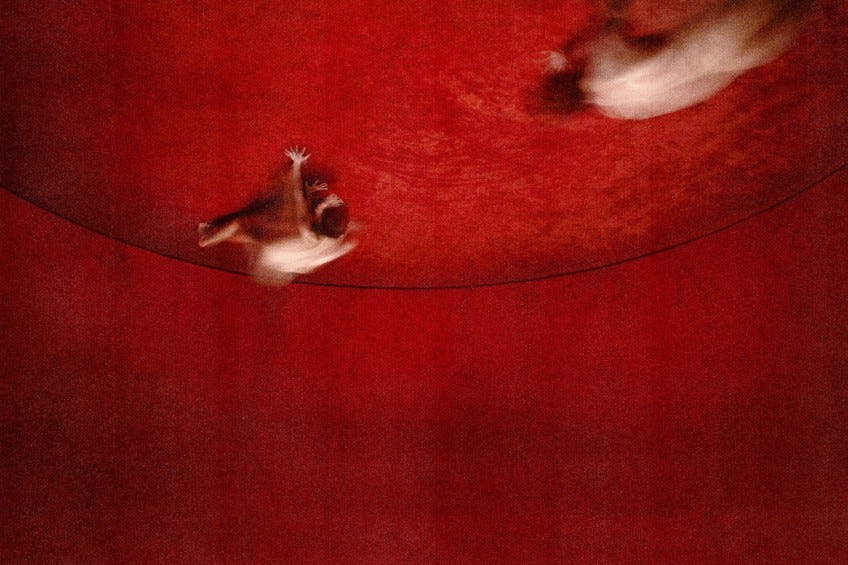Review Rundown: The One With Pop Stars, Dungeons, And Dark Narratives
A taste of Venice Immersive, VR tabletop gaming, the latest from Sam Barlow, and Lykke Li at The Broad in LA. SEVEN REVIEWS


Whoa! This week is big, with a couple of double dips. Museum installations, VR games, a touch of the Venice Immersive lineup, and even a PC/console game. Five shows, seven reviews. How? What? No time to explain, let’s go!
Last week’s Rundown, the one that had a site-specific play about a school shooting? It’s right here.
Are you a creator who looks upon these reviews with jealousy? Okay, the positive ones, at least? Then you might want to check out our How To Get Covered By NoPro guide.
Don’t miss a thing by signing up for the NoPro Newsletter, and you can support our efforts by joining our Patreon.
All Unsaved Progress Will Be Lost — Mélanie Courtinat
Venice Immersive, Through Sep. 10
If you asked me how to translate a work of documentary theatre or a museum exhibit about one of the great disasters of the last 100 years into a VR piece I don’t think I’d ever come up with launching bold supertitles above a computer generated meadow that was slowly but surely overtaken with brutalist architecture as the viewer drifted forward. I certainly wouldn’t have thought of deer occasionally emerging from platforms that rose out of the grass.
And I definitely wouldn’t have thought it could work if you told me about this, but I’ve seen it and it does, marvelously.
Courtinat’s piece doesn’t tell you what has caused so many people to flee from their homes until the very end, but as the testimonials mount — and it’s all drawn from historical records — it’s impossible to not start guessing. Which is half of what makes this all so profound because you start to realize just how many massive disasters you’re aware of, and manages to create a sense of both how terrible the world is and how wonderfully resilient people are all at the same time.
Quite the feat, that.
Keep an eye out as this one makes the circuit and becomes more widely available.
— Noah Nelson, Publisher
Demeo — Resolution Games
$29.99; Remote (VR & PC); Available Now
Inspired by older Dungeons & Dragons editions and their focus on combat and exploration, Demeo is a digitally simulated tabletop game with light role playing elements. One to four players pick a fantasy archetype hero to control, a three stage adventure set in a squared tiled environment to explore, and play cards with rolling a die to attack monsters. Does the party of heroes have what it takes to defeat these vile enemies, or will they foolishly split up and roll poorly, dooming themselves to failure?
Originally released in May 2021, Resolution Games has continually been making “quality of life” improvements to Demeo. These improvements ranged from gameplay mechanics to releasing new, free content. A major addition was a doubles mode, allowing two players to control two heroes each, now being able to play any adventure with a full party of heroes. In other words, Noah and I were finally able to play it without corralling two other staff members into buying Demeo.
Surprisingly, Demeo’s gameplay is equal parts accessible and complex. Moving your hero around the board to interact with enemies or objects is easy, with visual cues and lighting effects denoting what players can accomplish. Playing a card from your hand is equally effortless, both in seeing what you have available by rotating your hand and using a card on an enemy. Even rolling the die, the clatter it makes when thrown across the board to see if your action was successful, is utterly exciting. Yet, if players want to triumphantly finish the adventure, they must be mindful of learning unpromoted how enemies function and when not to use specific cards as they’ll have no effect.
I’ll quickly caution that if the most complicated tabletop game you’ve played is something like Monopoly or Ticket to Ride, Demeo’s gameplay learning curve is steep. Those with roleplaying experience will fare better, knowing how densely packed complex tiled dungeon exploration games can be. While there’s great variety in gameplay thanks to randomization of locations and enemy’s starting placement, after the first area of any campaign, most important rules and ideal gameplay decisions become quite apparent. With time, patience, and if able to be accompanied by others, any player can catch on quickly!
Playing with others in turn fosters Demeo’s two greatest strengths: communication and collaboration.You’ll always be talking with your compatriots, making plans on what to do and where to go next. Noah and I easily added an hour to our playtime simply with talking strategy. And as we were both playing on a Oculus Quest headset, we could look at each other (our faces masked, similar to The Under Presents) and point at certain places or things on the board. As Noah and I can’t get together for a tabletop game night without someone dropping a couple hundred dollars on a plane ticket, being able to huddle around Demeo’s board was truly the next best thing. And possibly better too, thanks to combat animation and sound effects.
Between the easy and smooth gameplay mechanics and Noah’s companionship, I truly forgot we were wearing our VR headsets, feeling as if we were actually together in the same room. Demeo is the first digital game that authentically and perfectly captures the joy and magic of playing tabletop games with friends.
– Patrick B. McLean, Chicago Curator
Noah’s take
This co-operative 2–4 player dungeon crawler is a simulation of tabletop miniature gaming that can be played in VR or on a desktop PC with players joining from either platform in cross-play.
Demeo, through both it’s smart gameplay and the framing of the game as taking place in a suburban basement or hobby store, really captures the classic vibe of tabletop gaming. Since Patrick did such an excellent job of waking us through what the game is, I’ll take a crack at the framing.
Games take place inside the virtual basement set. The gameplay table is smack dab in the middle, but around it you’ll find an old CRT TV set, a cartridge based game console, and the trappings of a room that time has forgot. It’s nifty, but nothing compared to the Heroes Hideout set.
This is a fully tricked out hobby store set, a social space where either friends or, if you so choose, strangers can meet up for pick up and play games. There are lore books scattered about, plush toys depicting the game’s bosses, a suction cup archery range, and a functioning Gauntlet arcade game clone. On one side of the room a slide projector shows off the Demeo Discord conversation.
A door in the back leads to another space, where folks can sit around a table and paint virtual miniatures together and chat away. It’s charming in the extreme, and rather relaxing to boot. And don’t worry: those miniatures are tied to you account, so if you visit a different room later you can pick up where you left off.
It’s even possible to launch a match of Demeo from the front room, but don’t make the same mistake Patrick and I did: that setup is for four players only even if it will start with fewer. It doesn’t scale down the difficulty for having a smaller party. Still: it’s a lot of fun to drop a game booklet on a virtual table and have it ready to launch a session within seconds.
In a time when companies are trying to figure out what the Metaverse should look like, Resolution Games has just gone and done the thing. They’ve also created a PC version that can cross play with VR, for those who want to play with friends who don’t have headsets. That said: I’ll likely stick to VR because of all the tactile touches.
I just hope they set up a “players as game master mode” and then someone graces them with the licenses for a few of the RPGs that Patrick and I both own so we can get some long overdue shenanigans underway.
In the meantime: come play with us!
— Noah Nelson, Publisher

Immortality — Half Mermaid
$19.99/Free With Microsoft Game Pass; PC/Xbox; Available Now
The night I hit credits on Immortality, the latest full Motion video game from Her Story creator Sam Barlow I dreamt in video grids.
Dozens of still frames lined up on a computer monitor is both dominant image of and central interface for a game that invites you to play detective by way of video editor.
The central premise of the setup goes like this: in the late 60’s actress Marissa Marcel was poised to be the next big thing. She made two movies back to back, but circumstances kept the films from ever being released. 30 years later she made one last film and then disappeared altogether. Now the footage of those three shoots has been digitized and you’ve been tasked with figuring out what happened to her and why the films were never released.
Get No Proscenium’s stories in your inbox
Join Medium for free to get updates from this writer.
SubscribeSubscribe
Of course, it’s not nearly that simple. How could it be?
Even after reaching a point where the game’s credits rolled, signaling that I’d unlocked enough to have pieced together “A” narrative I’m still puzzling out what happened and what it all means. The game is one of those rare occasions when a PC/console (and soon to be mobile, thanks to Netflix) release taps into what makes immersive work tick.
When played with a mouse and keyboard the illusion that you’re working with a modified version of AVID, simplified for the lay user, settles in. A tantalizing illusion that lets you suspend disbelief and become the editor working with the footage, even as the footage starts to reveal things it shouldn’t.
The game’s mechanics, which find you clicking on key images and jumping to an entirely different piece of film from one of the three possible pictures (and assorted material around those pictures), create the kind of non-linear narrative one finds in alternate reality games. One with an incredibly dark poetic sensibility.
To be sure, this is a horror game, and the stand alone content warning on the title screen lets it be known that the footage features violence, sex, drug use, and nudity in just about every possible combination. It’s uncomfortable at times, from the stunning to the awkward. All of it very much on purpose, the entire package giving off the feeling of being entangled with a cursed object.
I don’t think I’ll be content until I’ve discovered all its secrets.
— Noah Nelson, Publisher

Tita Cicognani — Hammer Museum
Free (Reservations Required); Los Angeles, CA; Runs Through Oct. 9
I recently made a reservation: not for dinner at a restaurant or a stay at a hotel. I booked a reservation, for a hot tub, in an art museum.
An embellished version of the classic motel novelty, Tita Cicognani’s Heart Tub is fully functional and adorned with purple lighting, champagne cradle, heart-shaped railing, and a crocodile-embossed red stairway. The installation also includes video, sound, projections, a towel station, and changing area.
Bathers relax amidst the frothy jets while watching an animated short film. Set inside a fantastically generic hotel room, the film also centers around a heart-shaped hot tub. Together, the physical and digital tubs become otherworldly portals into public intimacy and private connection.
Heart Tub is Cicognani’s third iteration and the first one installed in an institution. Hammer Museum’s program notes include references to other participatory art installations set in similar environments such as saunas and pools. Those installations preceded the pandemic, while Cicognani first produced this work in 2021 at ArtCenter’s MFA program. Covid acclimatization renders this experience strange — and strangely familiar.
In recent years, our spaces have publicly contracted and privately expanded. Digital places adopted a shared-contained hybrid quality we’ve grown accustomed to. Some physical places now seem disproportionate and spatially awkward, as though they’re less real than virtual backdrops.
This environmental disorientation and public-private inversion is perfectly leveraged by Cicognani. Physically immersed in its chlorinated waters, participants become part of the artwork. While they observe the film, they are also on display for other viewers; reservations are required for the tub, but the entire installation is open to the public during museum hours.
Voyeuristic works have long been a cultural mainstay (and often utilize glass enclosures): Tilda Swinton napped her way through art institutions in London, Rome, and New York; “box girls” ignored guests at West Hollywood’s Standard Hotel; and office workers “became zoo animals,” courtesy of the advertising giant Wieden+Kennedy.
Capitalizing on our Covid sensibilities, Cicognani removes barriers (glass or otherwise) between the observer and the observed. Both roles are empowering and vulnerable; they also feel interchangeable. After my reservation, I later returned to the room. Two people lounged in the tub, chatting away. Maneuvering about the space, I leaned into the humidity and joined the duo’s chatter, as they sat in a heart-shaped hot tub, in an art museum, as though it was the most natural thing in the world.
— Laura Hess, Arts Editor

Resonant Tones: Ü & EYEYE by Lykke Li — The Broad
Free; Los Angeles, CA; Run Concluded
Before we get into it, I just want to say that I started out a Lykke Li fan before going to this at The Broad, and her music remains in heavy rotation for me still.
Billed as an “immersive, yet intimate, sensory project entitled Ü & EYEYE” that would be launched with a performance and include a “spatial sound composition based on her latest album” the whole of the installation and experience was a letdown and a half.
When possible I like to assess works based on how they’re framed, but it was kind of hard to experience the audio-video element of the installation as anything but a missed opportunity. A beautifully shot video gets rendered into a looping palindrome sequence, but beyond the offering of the audience to sit on the floor and a sound mix that seems to have a touch of spatial sequencing to it there didn’t seem to be much to elevate this installation above a standard video projection. Apparently the carpet was lined with a scent, but given the sheer number of people who were present on opening night, that didn’t really come across.
If anything, and maybe this is the fan in me talking, it feels like this project isn’t ambitious enough. There’s striking images in the video, and the artist’s vocal presence is as haunting as ever, which could have been supported by bringing just the barest amount of the world of the video into the physical space through lighting or practical elements. Just something to ground us in the world being projected. Really: at the end of the day that’s all we’re ever asking for when the word “immersive” is invoked.
As for the performance: things started off with promise in the lobby, but the traversal up to the third floor just lead to a big energy drop. Plus no affordances were made to be able to see the artist, who performed standing on the floor of the gallery. Yes, we do use “puts the audience on the same level as the artist” as part of our definition of immersive, but not like this. What could have been a great opportunity for a different kind of connection just dissipated into the gallery walls.
A disappointing showcase for a wonderful artist.
— Noah Nelson, Publisher
Laura’s Take
Like Noah, I was surprised that Ü & EYEYE failed to deliver. In partnership with an esteemed cultural institution, an internationally acclaimed, award-winning musician unveiled a new audiovisual album (described as “the singer’s magnum opus”), accompanied by a live performance.
So what went wrong?
The performance was indeed problematic, but let’s focus on the installation which claimed to be “a hyper-sensory cathedral of female romantic fantasy.” The press photo depicted a curved space covered in lush, red velvet. Two blurred, nude figures crawled on the ceiling. This evocative imagery was front of mind as a museum docent ushered us into… a theatrical black box. Lined with standard-issue black carpet and curtains, the proscenium orientation had a screen at one end. Viewers sat or stood, watching the projected video.
With themes of addiction, obsession, and heartbreak, the narrative consisted of footage of naked dancers (the red velvet room), and less abstract “city” recordings. The latter involved gorgeous, Michael Mann-esque shots of Los Angeles. Amidst sweeps of nighttime driving, a love triangle unfolded. As Lykke Li’s songs played, the video cycled through spliced sequences: progressing forward, looping back, and alternating between sped up and real-time motion for both the dancers and the city shots. The repetition quickly shifted from disorienting to tedious.
Docents explained that a custom scent was formulated for the experience: the carpet was infused “with the scent of regret and intoxication.” Through my mask I could smell only my own regret (also customized for the experience).
So what about the “hyper-sensory cathedral of female romantic fantasy?” I know it can be done, because I’ve been to one before.
In 2017, Björk Digital arrived in Los Angeles. A traveling exhibition focused on virtual reality, it included a presentation of Björk’s heartsick song, “Black Lake.” Originally commissioned by the Museum of Modern Art, the installation consisted of two screens at opposite ends of a dark room. The looping, 10-minute music videos were different captures of Bjork’s performance in the same Icelandic terrain. Speakers populated the surfaces, creating an engulfing soundscape and a landscape of cave-like stalactites and stalagmites. The installation stretched the song from lyrics and melodies into a visceral, sensorial, and immersive experience.
Both Björk Digital and the MoMA retrospective were full-scale shows, warranting detailed (and costly) production design. And yet, even minor adjustments to Ü & EYEYE could have generated an outsized impact.
In the end, there was no hyper-sensory cathedral or romantic fantasy. There was only the sad reality of poor execution.
— Laura Hess, Arts Editor
Discover the latest immersive events, festivals, workshops, and more at our new site EVERYTHING IMMERSIVE, new home of NoPro’s show listings.
NoPro is a labor of love made possible by our generous Patreon backers. Join them today!
In addition to the No Proscenium website, our podcast, and our newsletters, you can find NoPro on Twitter, Facebook, YouTube, Instagram, in the Facebook community Everything Immersive, and on our Discord.